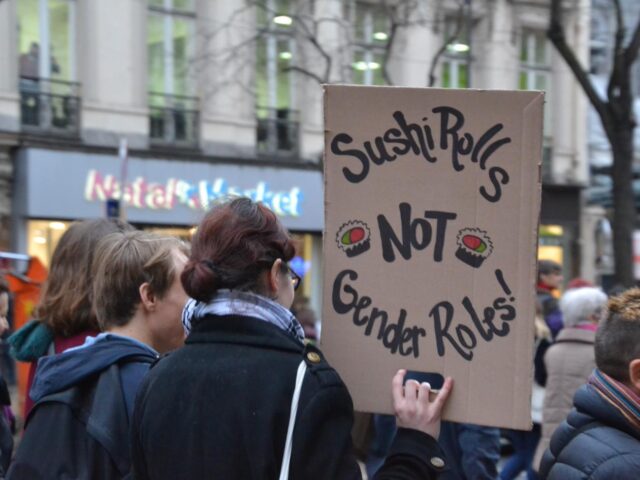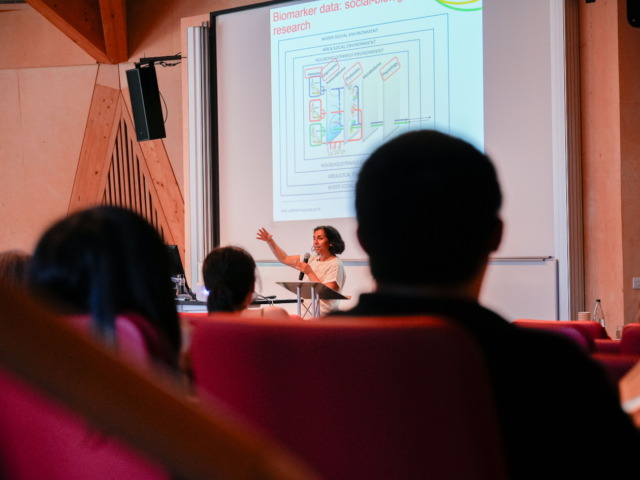Interviews are typically carried out face-to-face in respondents’ homes by trained interviewers or by respondents themselves completing their survey online. Every question is answered voluntarily.
All household members of the households selected at the first wave and their descendants constitute the core sample and are followed wherever they move within the UK to see how things have changed over time and over their lifecourse. All those who join their households in subsequent waves do not become part of the core sample, but are interviewed as long as they live with at least one core sample member. For more technical details on these see the Following rules section below.
The household enumeration grid identifies household members and collects some basic information about them. Any knowledgeable adult in the household can fill this in.
The household questionnaire is generally asked of the person who owns or rents the accommodation. This questionnaire includes questions relevant to the whole household such as expenditure on heating, information about ownership, mortgage, rents and so on.
All household members aged 16 or above are asked to complete an individual questionnaire. During face-to-face interviews, interviewers ask most of the questions but respondents complete one section, the self-completion questionnaire. This was available as a paper questionnaire for the first two waves after which it was available on the computer (CASI). If someone is not able to participate due to illness or they are busy, interviewers can ask someone else in the household (e.g., spouse or adult child) to complete a proxy questionnaire on their behalf. This is a much shorter questionnaire including only factual questions.
Household members aged 10-15 years are asked to complete a short self-completion youth questionnaire, with permission from their parent or carer. They become eligible for a full interview once they reach the age of 16.
Some information about children 0-9 years old are collected from their parents or guardians.
Interviewers also provide some information about the condition of the property, cooperativeness of the respondents and any difficulties faced by respondents in answering the questions etc.
Who answers which questions
This video describes which respondents answer which questions and questionnaires and by which mode during their interviews for Understanding Society.
In this podcast Violetta Parutis Associate Director of Surveys talks about the motivation for participants to take part in the Study each year.
Mode – Web, face-to-face and telephone
In the BHPS and for the first six waves of and Understanding Society interviews were mostly conducted face-to-face (i.e., in person). From Wave 3 in the BHPS and from Wave 2 of Understanding Society onward, a small number of respondents are interviewed over the phone.
From Wave 7 onwards, web interviewing was introduced, these interviews are referred to as CAWI (Computer Assisted Web Interview). At Wave 7, it was only adults in households that did not take part in Wave 6 that were invited to complete online. From Wave 8, adults in some households that had taken part in Wave 7 were also invited to complete online. While 20% of the sample was ring-fenced to be interviewed face-to-face or in person, 40% were invited to complete their survey online web-first (or CAWI-first), and the remaining 40% of the sample were issued directly to interviewers (CAPI-first). CAWI-first and CAPI-first refers to the policy of allocating non-respondents to the mode they were not initially allocated to. As interview mode is known to have an impact on responses, users are advised to read the section Analysis advice for mixed mode data.
In each successive wave (until the start of the Covid-19 pandemic in 2020) the proportion of the sample invited to take part online increased to a maximum of 70%. Adults who are invited to complete online, but do not take part in the first five weeks, are issued to interviewers who then try to contact them to take part in-person. Adults issued directly to interviewers who do not take part in the first ten weeks are invited to complete online. Both web-first and CAPI-first non-respondents were also eligible for the telephone ‘mop-up’ towards the end of the fieldwork period. This mode is used to increase participation among those adults who are hard to contact in person. In mid-March 2020, face-to-face interviewing was suspended due to the ‘lock-down’ associated with the COVID-19 pandemic. Adult sample members who were allocated to interviewers at that time were sent a letter, explaining the position with face-to-face interviewing, and giving them their log-in details so they could complete online. From the April 2020 monthly sample onwards, all adult sample members were issued web-first, with telephone as the follow-up mode. Face-to-face interviewing was resumed from April 2022, with around 12% of households as CAPI-first (with web/telephone follow-up) and the rest as web-first (with CAPI/telephone follow-up). The ring-fenced sample has been dropped.
The Wave 14 General Population Boost Sample started from January 2022. During January to March 2022, 80% of the sample were web-first and 20% CAPI-first, from April to December 2022, 50% were web-first and 50% CAPI-first, and from January to December 2023, 80% were web-first and 20% CAPI-first. See the main survey Wave 14 technical report for further details.
Tips for analysts – COVID-19
As noted above, with the arrival of COVID-19, all face-to-face interviews were suspended and we invited all our sample members to take part online or by telephone. Some new questions were added about Covid-19 and furlough. Face-to-face interviews were used again from April 2022. We have brought together a document to help researchers explore Understanding Society changes to the main study due to the COVID-19 pandemic.
In this podcast Annette Jackle Associate Director of innovations for Understanding Society talks about the different modes used for collecting interview responses.
Interview dates, fieldwork periods
The sample is issued monthly. The start date and length of the fieldwork period has varied across waves (earlier waves having shorter fieldwork periods), interview modes and samples. The fieldwork period is generally split into an initial interviewing phase, and then a shorter ‘re-issue’ phase where non-responding households are reviewed and re-issued, often to a different interviewer. To find out more about fieldwork start dates and durations see Understandng Society fieldwork procedures.
The Great Britain part of the GPS, GPS2 and the EMBS comprise of 24 monthly samples while the Northern Ireland part of the GPS. GPS2 and the BHPS samples comprise of 12 monthly samples. The IEMB sample, which was added in Wave 6, was issued as 4 quarterly samples. For the GPS-GB. GPS-GB, GPS2-GB part and EMBS the fieldwork is around 24 months, while for the BHPS, GPS-NI and GPS2-NI part it is during the first 12 months of a wave and for the IEMBS it is during the last 12 months of a wave. While the sample month may change for sample members across waves, the sample quarter remains the same across waves.
Note that even though the fieldwork runs over two years for some samples, and the duration of fieldwork for sample months change across waves and modes, every sample member is interviewed approximately one year apart. View the Survey’s timeline.
Information about the sample month in which a household was issued is available in the variable w_month, which is located in a number of data-files: w_hhsamp, w_indsamp, w_issue, w_callrec, w_child, w_hhresp, w_indresp, and w_indall, xwaveid. The variable that identifies the sample quarter is w_quarter in these files and xwavedat. The interviews for BHPS Waves 1-18 were conducted generally between September and December of each year with the re-issue period extending for upto 5 months after that. The BHPS sample was issued as a single batch, so this information is not applicable and hence not available for the BHPS Waves 1-18.
Due to the long fieldwork period for each monthly sample, the month issued will not necessarily be the month in which the interview took place. The actual date of interview for the individual adult interview is given in the w_indresp file in variables w_istrtdatd (day), w_istrtdatm (month), and w_istrtdaty (year). The variables for the date of the household interview are w_histrtdatd (day), w_histrtdatm (month), and w_histrtdaty (year).
Information about the issue number, whether first issue or a subsequent re-issue, is available in the w_issueno variable, located in w_callrec data file (all waves), and the w_issue data file (Waves 1-5 only). These files also include information about all the calls made until a successful interview and the outcomes of each call. This information is not available for the BHPS Waves 1-18.
Incentives
All incentives are per person and are a token of our appreciation for their help. Most of the incentives are unconditional. Over the years to improve response rates, evidence based changes have been made to the incentive schemes. The current design is that for every adult household member who participated in the last wave and those who turned 16 in the current wave, the invitation letter to complete the survey includes an unconditional £20 gift voucher. Those respondents who turn 16 are welcomed to the adult survey with an additional incentive of being entered into a prize draw to win an iPad. All 10-15-year-olds are sent or given an unconditional £10 incentive with their paper self-completion questionnaire. These are either handed over by the interviewer or sent through the post, depending on the mode in which the household grid is completed. Adult sample members who did not take part during the previous wave, including new adult entrants to the household, are offered a £20 incentive if they are able to take part in the current wave (conditional). For adults in web-first households there is a bonus £10 incentive which is sent to them if they complete the survey within five weeks (conditional).
Consent
Every question, in each section of the questionnaire, is answered voluntarily by participants. Information on the consent process is outlined on the consent information page. Understanding Society asks for consent to link responses to certain records held by government departments and other agencies. The type of records includes health, education, benefits records etc. and vary according to the wave and whether consent has already been sought either verbally or in writing. Those asked for consent are given a copy of the consent information leaflet along with a privacy notice to read. Read more about linked data.
Fieldwork Documents
The fieldwork documents used during the interviewing process include emails, letters, leaflets and project instructions for interviewers. Details of who answered which module is listed in the Modules table within the “Project instructions for Interviewers” documents (Waves 1-8), there is a separate one for each wave.
Following rules
Everyone enumerated in the households when a sample is selected are considered to be an Original Sample Member (OSM). Anyone who moves in with an OSM from onwards the subsequent wave is considered to be a Temporary Sample Member (TSM). The only exception is any non-ethnic minority individual enumerated in EMBS households in Wave 1 and in IEMBS households in Wave 6. They are considered to be TSMs. Any child born to an OSM mother is an OSM. Any TSM who has a child with an OSM becomes a Permanent Sample Member (PSM). Note, in the BHPS children of OSM mothers and OSM fathers became OSMs. But the new rules are applied to any children born to BHPS sample members after they became part of Understanding Society.
OSMs and PSMs are always eligible for interviews as long as they are living in the UK. TSMs are eligible for interviews only if they live with at least one OSM or PSM. This means that when issuing the sample at the next wave, households which had been identified as containing only TSMs at the previous wave are not issued.
There are other reasons that a household may not be issued at a particular wave, depending on information received between waves. Households are withdrawn if we are informed that a whole household has adamantly refused, or asked to withdraw from the study; have emigrated; have died; or are no longer mentally or physically capable to make an informed choice to consent.
From Wave 4 onwards, until the COVID-19 pandemic, we also withdraw households as ‘dormant’ for which the outcome at the previous two consecutive waves were both non-contact, were both refusal, or there was a refusal two waves prior followed by a non-contact one wave prior. The rules to designate households as dormant were suspended after the COVID-19 pandemic. During this time, it had not been possible to interview sample members face-to-face, and so keeping the dormant rules may have resulted in people who were not able or willing to take part online or on the phone to have been dropped from the sample.



